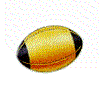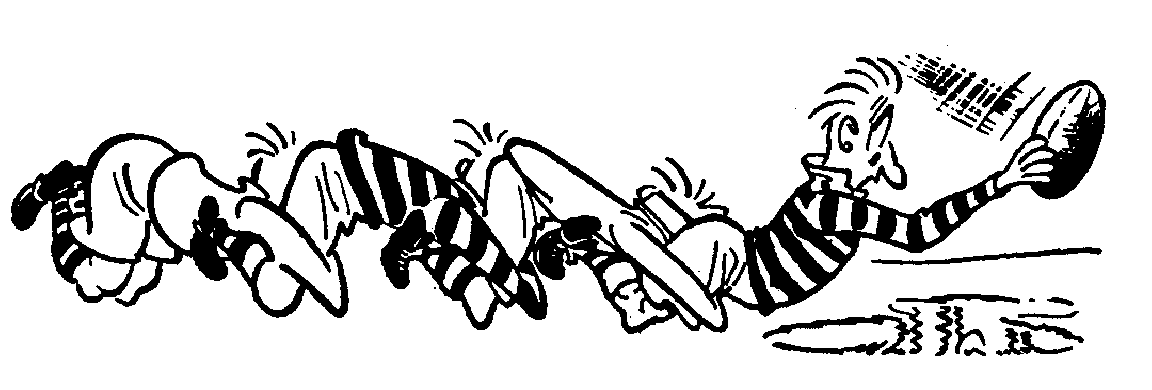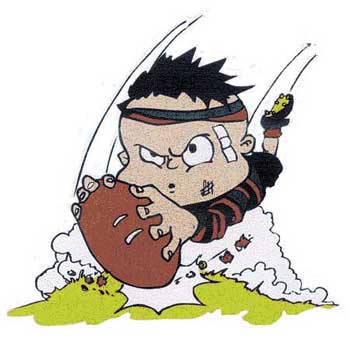 |
 |
 |
 |
 |
 |
| Well, we are now in the spring of 2002 and you know what that means!? Time to take out the cleats, mouth guards, jerseys, & stuff and hit the rugby pitch (sometimes literally)! The Notre Dame Silver Eagles are hoping to have a very successful season with two very strong teams. So keep checking back for team updates, and excitement. Hack The Bone!!! |
| Welcome to the Notre Dame Rugby Club |
 |
 |
 |
 |
 |
| Rugby the Sport |
 |
| History |
| Rugby was developed by an infraction of the rules by a Rugby School of England graduate, William Webb Ellis, who during a football game in 1823 failed to kick the bouncing ball and instead picked it up, placed it under his arm, ran down the feild, and crossed the opposing team's goal line. Eventually news of his ball carrying play spread to other English public schools, and by degrees the thought gained strength. Cambridge was especially inpressed with its possibilities that in 1839 they decided to give it a try. The success of this trial inspired the rugby athletic officials to adopt the game which the Cambridge students called the "rugby game". Soon other schools followed, and in 1848 the first code of the game was formulated. By 1864 there were about twenty clubs playing under the rules that a player was allowed to run with the ball, and in 1871 the Rugby Football Union consisting of twenty-one amateur clubs was established. ~Colliers Encyclopedia |
| Rules, Objectives, Scoring |
| *Rugby is divided into two 40 minute halves. Each half begins with a kick off, where the ball is placed in the middle of the field and one team kicks it to the other. The objective is to carry the ball past the opposing team's goal line and place it with control over the line, or kick it through the goal posts. *Rugby is almost always continuous in play, stoppages occur only when there is an injury, a try is scored, if the ball goes out of bounds, or if there is a restart in play due to a rule violation. *In rugby, there are 15 players per side. This is divided by 8 forwards and 7 backs. The forwards basically try to get the ball from the other team whilst the backs try to run the ball upfield and score. This is usually done by set plays. *When the ball goes out of bounds a lineout is formed, if there is a violation of rules a scrum is sometimes called. *In rubgy, a team can score three ways: A try- when the player of one team manages to carry the ball past the opponents goal line and sets it down (awarded 5 points); A conversion- occurs after a player has scored a try. He/she is given the chance to kick the ball through the goal posts. If successful, he/she is awarded 2 points; A drop goal- when a player decides that instead of scoring a try, he/she will kick the ball through the goal posts in the middle of the play (awarded 3 points). *The following things are illegal in the game of rugby: high tackle, forward pass, knock on, dangerous tackling (as in punching, kicking, etc). |
| Team messages, memories, stories, and experiences. |
| Check the team schedule and scores to see where we stand. |
| Spring Tour 2002 |
| Pictures |
| Meet the Varsity Girl's Team |
| Meet the Junior Boy's Team |
| Meet the Coaches |
| Rugby Links |
| Contact Us! |
| *Advantage- the referee allows the game to uninterrupted as long as the ball is in play and there are no major infractions. *Blind side- the nearest side to the touch line. *Dummy- A technique where one pretends to pass the ball. *Knock on- where the player drops the ball forward. *Line out- A play where two single file lines are formed by both teams after the ball goes out of touch (out of bounds), bringing the ball back into play. *Off-side- when a player is in front of the ball when played by a team member. *Penalty Kick- a kick awarded to the non-offending team for an infringement by their opponents. *Place kick- ball is kicked after being placed on the ground for that purpose. *Punt- the ball is dropped from hands and kicked before touching the ground. *Scrum- players from each team come together in a formation. |
| Terminology |
| Site created and maintained by Reilly Last Updated May 21, 2002 |









